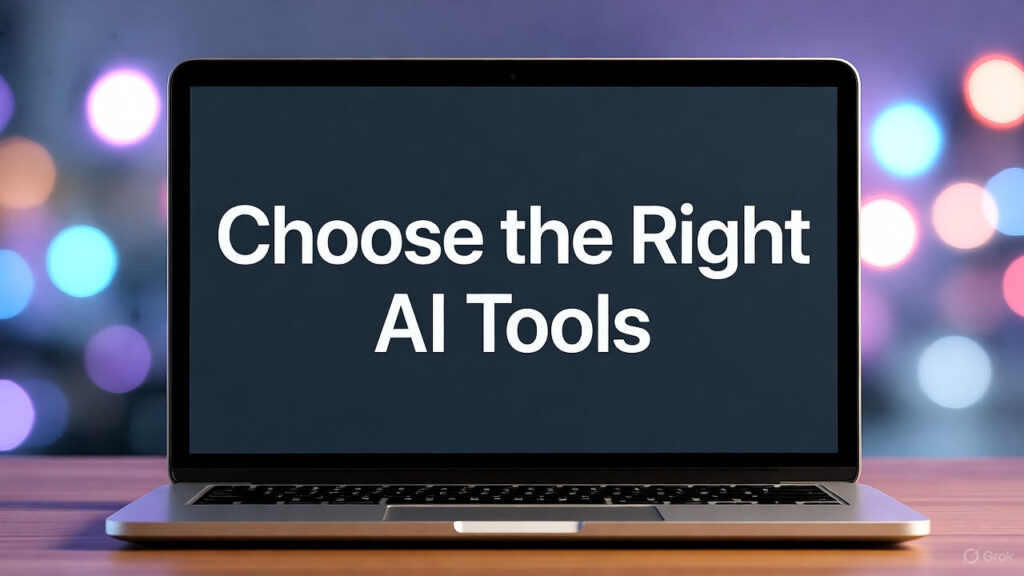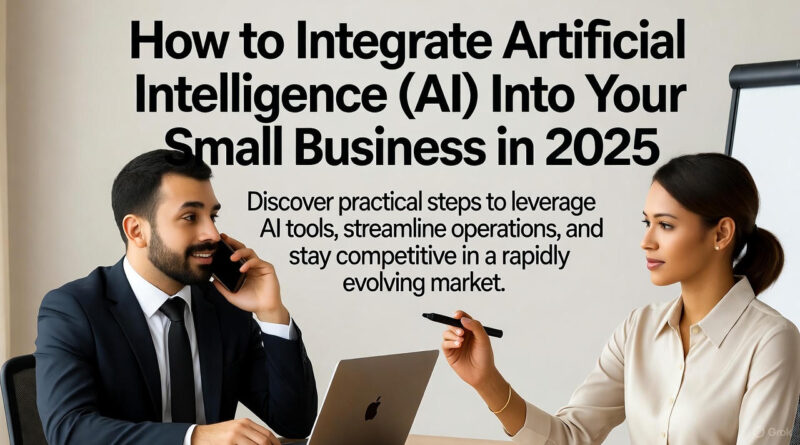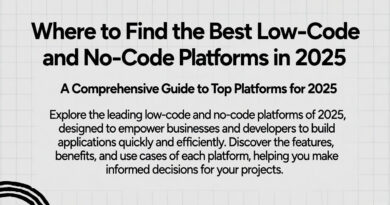How To Integrate Artificial Intelligence (AI) Into Your Small Business In 2025
How To Integrate Artificial Intelligence (AI) Into Your Small Business In 2025
Artificial Intelligence (AI) is no longer a futuristic idea reserved for big tech companies. In 2025, small businesses across every industry—from retail and real estate to logistics and beauty—are using AI to save time, reduce costs, and improve customer experience.
This guide will show you how to integrate AI into your small business step by step, even if you don’t have a tech background.
Why AI Matters For Small Businesses In 2025

AI has become an equalizer for small businesses. Tools that once required data scientists are now affordable, cloud-based, and no-code friendly.
- According to a 2025 Forbes survey, over 60% of SMEs use at least one AI-powered tool.
- Businesses that leverage AI report a 15–25% increase in productivity.
- AI marketing automation improves lead conversion by up to 50% (HubSpot AI Trends 2025).
Simply put: ignoring AI now is like ignoring the internet in the early 2000s.
Step 1: Identify Where AI Can Help
Start by pinpointing pain points that drain time or money. AI is most effective when solving repetitive or data-heavy tasks.
Common areas include:
| Business Function | Example AI Use | Recommended Tools |
|---|---|---|
| Customer Service | Chatbots, FAQs, automated replies | ChatGPT for Business, Intercom AI |
| Marketing & Sales | Email automation, ad targeting, analytics | HubSpot AI, Jasper, Persado |
| Finance | Invoice scanning, expense tracking, forecasting | QuickBooks AI, Zoho Books |
| Operations | Scheduling, stock alerts, process automation | Zapier AI, Make.com |
| Content Creation | Blog posts, video scripts, design | Canva Magic Studio, Notion AI |
Pick one area to start with—ideally something measurable so you can track ROI.
Step 2: Choose The Right AI Tools

The AI ecosystem is massive, so selecting the right tools saves time and frustration.
💼 AI for Marketing & Customer Engagement
- HubSpot AI – Automates lead scoring, customer segmentation, and campaign recommendations.
- Jasper AI – Generates blog posts, captions, and ad copy in your brand voice.
- ChatGPT for Business – Provides customer support and research assistance through conversational AI.
📊 AI for Finance & Analytics
- QuickBooks AI and FreshBooks Sensei – Automate bookkeeping and detect spending anomalies.
- Fyle AI – Scans receipts and generates reports automatically.
🛠️ AI for Productivity & Operations
- Zapier AI and Notion AI – Create automated workflows between your apps.
- Motion App – AI scheduling assistant for teams.
🎨 AI for Creative & Design
- Canva Magic Studio – Generates branded designs, videos, and social posts.
- Runway ML – Edit videos with AI (remove background, add effects).
Check vendor sites for free trials—most offer one.
Step 3: Start Small With No-Code Or Low-Code Platforms
You don’t need coding skills to integrate AI. Platforms like Zapier, Make.com, or Microsoft Power Automate let you build workflows visually.
Example:
- Connect your online store to ChatGPT via Zapier.
- When a customer buys something, send a personalized “thank you” email automatically generated by AI.
In a day, you’ve automated a task that normally takes hours.
Step 4: Train AI With Your Business Data
AI is only as smart as the data it sees. Customize it to your operations.
- Upload FAQs, policy docs, and product info to train your chatbot.
- Feed past invoices to your finance AI for better forecasting.
- Use CRM data to improve personalized recommendations.
Most tools include custom AI model training or “knowledge base” features—always enable them.
Step 5: Ensure Data Privacy & Compliance
Trust is a pillar of AI adoption. Follow data protection best practices:
- Use platforms that comply with GDPR / CCPA.
- Never upload sensitive customer data without consent.
- Regularly audit AI outputs for accuracy.
For regulated sectors (health, finance, education), choose ISO-certified AI vendors or consult your local data-protection authority.
Step 6: Measure Results & Iterate
AI is not “set-and-forget.” Track key metrics like:
- Time saved per week
- Cost reduction
- Sales or conversion uplift
- Customer-response times
Compare performance before and after integration. Adjust prompts, retrain models, or switch tools if results plateau.
Examples Of Small Businesses Using AI In 2025

🧁 Bakery Chain Automates Marketing
A small bakery chain in London uses Jasper AI to write daily Instagram posts and Canva Magic Studio for designs—cutting marketing time by 80%.
🏠 Real-Estate Startup Uses ChatGPT
A real-estate startup integrates ChatGPT API with its website to answer property inquiries 24/7. Leads increased by 35% in three months.
🧾 Local Accounting Firm Uses QuickBooks AI
A three-person accounting firm in Lagos uses QuickBooks AI to auto-categorise transactions and flag anomalies, saving 10 hours weekly.
Step 7: Upskill Your Team
AI adoption succeeds when employees understand its role.
- Provide short courses from Google AI for Business, Coursera, or LinkedIn Learning.
- Encourage prompt-writing workshops.
- Assign an AI champion in each department to guide peers.
Continuous learning keeps your business competitive as AI evolves.
Step 8: Scale AI Across The Business
Once you see positive ROI:
- Expand to other departments (HR, logistics, inventory).
- Integrate multiple AI tools for full-process automation.
- Consider custom AI agents or chatbots using OpenAI GPTs or Anthropic Claude Bots.
Challenges & How To Overcome Them
| Challenge | Solution |
|---|---|
| Lack of AI knowledge | Start with no-code tools and tutorials |
| Cost concerns | Use freemium plans or open-source options |
| Staff resistance | Show time savings through pilot projects |
| Data errors | Periodically review outputs and retrain models |
| Over-automation | Keep a human review layer for key tasks |
AI should augment, not replace, human judgment.
Future Of AI For Small Businesses (2025 and Beyond)
Emerging 2025 trends:
- Agentic AI tools that make decisions autonomously.
- AI-powered CRMs that predict churn and recommend pricing.
- Voice AI for calls and customer service.
- Generative AI commerce—AI designing products or ads dynamically.
According to McKinsey, AI adoption will contribute $4.4 trillion annually to global productivity by 2030, and small businesses will capture a growing share.
Related Posts
- Where to Find the Best Low-Code and No-Code Platforms in 2025
- How to Use Agentic AI Tools to Automate Daily Tasks
- Top Tech Trends Reshaping Businesses in 2025
FAQ
Q: Do I need coding skills to use AI in my business?
No. Many platforms are no-code and designed for non-technical users.
Q: What’s the best AI tool for marketing small businesses?
Jasper AI and HubSpot AI are great for campaigns and content.
Q: Is AI expensive?
Many tools have free or low-cost tiers. Start small and scale.
Q: Can AI replace employees?
Not entirely. It handles repetitive work, freeing humans for strategy and creativity.
Q: What industries benefit most?
E-commerce, logistics, marketing, real estate, finance, and customer service are seeing huge gains.
🔑 Key Takeaway
AI in 2025 is no longer optional—it’s a growth driver. Start small, choose the right tools, and scale confidently.
Ready to begin?
Explore AI tools, experiment with one process, and share your experience in the comments.




